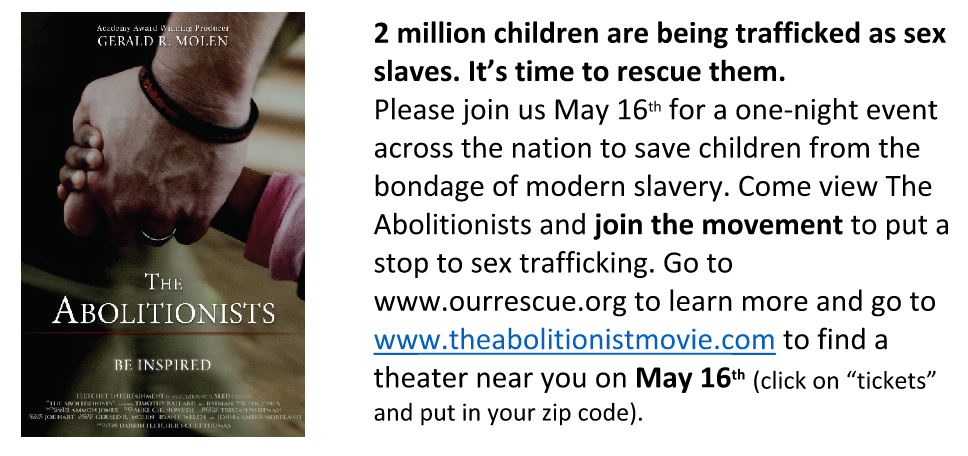Economists apply math and statistics to human behavior to identify trends and patterns in supply and demand. These two forces drive economic theory and influence our individual decisions. Globalization has created an international market driven by a network of buyers and sellers that sprawls across the globe. There are many determinants of supply and demand, many of which we don’t understand or that we deem insignificant. However, if the butterfly effect, a mathematical theory describing the far-removed effects of seemingly insignificant actions, is true in any discipline, it would be economics.
Human trafficking occupies a dark corner of the formal market, but it’s regulated by the same laws of supply and demand, which means it exerts influence on the formal market. While it may be difficult to see the trafficking market, it’s definitely measureable. According to the International Labour Organization (ILO), the trafficking trade nets over $150 billion annually, tailing behind only drugs and arms smuggling in terms of criminal revenue streams.1
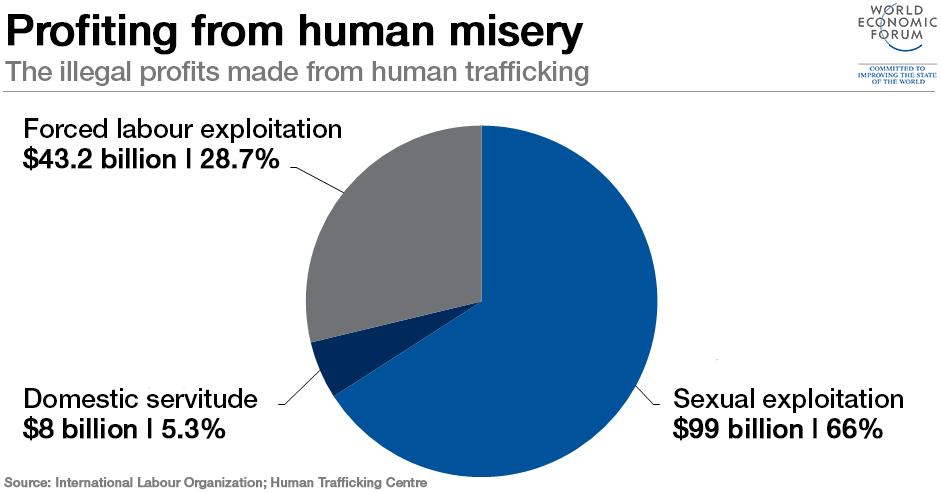
Image from World Economic Forum
Considering that traffickers don’t pay their enslaved workers, traffickers retain approximately 70% of their profits after costs of slave transportation and logistics are subtracted, according to Dasra, a philanthropic think-tank based in India.2 Those profits aren’t invested in the goods and services of the formal market. Traffickers don’t need to look farther than their own sordid businesses to reinvest their profits and grow their lucrative operations. Massive sums of money remain locked away from the formal market and can’t be harnessed for economic growth.
Not only do traffickers vacuum money away from legitimate markets, but they also make it harder for legal workers to get jobs.3 Trafficking occurs at multiple levels in the supply chain, or the flow of raw resources to finished goods. Traffickers specialize in stages of production that they deem most profitable, including manufacturing, harvesting, mining, packaging, and distribution. People who actually want jobs in those industries can be crowded out by the forced labor market because forced laborers aren’t paid wages.
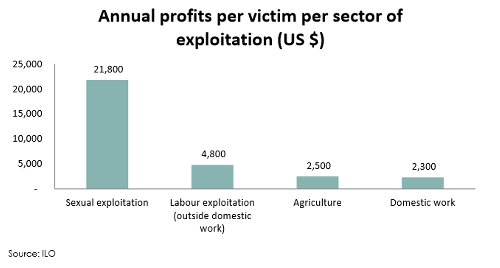
Image from International Labour Organization
Many view human trafficking synonymously with the sex trade. While sexual exploitation accounts for a large amount of trafficking profits, many revenues flow from domestic work, mining, agriculture, and construction.4 Those forced into these industries work from dawn until dusk without pay. They can’t contribute to their local economies by purchasing other goods and services. Nor can they work efficiently. Forced labor doesn’t provide for educational opportunities or healthcare, which means that enslaved individuals lack skills and the healthcare they need to perform optimally even if they wanted to. The Global Slavery Index estimates there are at least 45 million slaves in the world.5 That’s 45 million people who could have contributed to the global economy with greater efficacy if they had the resources needed to perform at their full potentials.
To remedy these economic symptoms of human trafficking, we must address the socioeconomic disparities that often force individuals into slavery. The ILO has espoused a protocol that would create a global network that would regulate international supply chains and insulate them from trafficker influence. Individual nations, even wealthy, developed ones like the United States, should also fight against growing economic disparities, especially in migrant workers. This can be accomplished through education programs targeting at-risk children, worker skill-training and slavery awareness programs, support systems for financially-strained individuals, and government laws regarding immigration and employment.
Sources
- “ILO says forced labour generates annual profits of US$ 150 billion,” ILO.org, last modified May 14, 2014, http://www.ilo.org/global/about-the-ilo/newsroom/news/WCMS_243201/lang–en/index.htm
- Ton, Ahn. “The Cruel Economics of Human Trafficking in India,” Asianphilanthropyforum.org, last modified February 28, 2014, http://www.asianphilanthropyforum.org/cruel-economics-human-trafficking-india/
- “Trafficking in Persons Report 2009,” State.gov, accessed April 19th, 2017, https://www.state.gov/j/tip/rls/tiprpt/2009/124798.htm
- “Labor Trafficking,” Polarisproject.org, accessed April 19th, 2017, https://polarisproject.org/labor-trafficking
- “Global Findings”, Globalslaveryindex.org, accessed April 19th, 2017, http://www.globalslaveryindex.org/findings/
My name is Adriel Vigo, founder and president of the Austin Free Project. The AFP was founded to bring awareness to the growing issue of human trafficking; and involve the community in the battle against it. At its peak, AFP was a partnership of two universities and one community college with members including students of University of Texas, Texas State, and Austin Community College. AFP saw its beginning by creating awareness campaigns throughout college campuses in the Austin area. This was a great way to inform and involve the public of how human trafficking was very much alive and well in our own city. Soon after, we partnered with Purpose Jewelry to begin a fundraising campaign. Purpose Jewelry is an organization concentrating on empowering victims of human trafficking by educating and rehabilitating. Once rescued, the women are given safe places to live and are taught valuable, enriching skills such as jewelry making. Purpose jewelry then sends you the jewelry to sell, where the profits are sent back to the women themselves to further their rehabilitation! We held two different trunk shows with Austin Catalyst, a youth group assisting the 16-24 ages in the Austin Area. At these shows we showcased the jewelry; but were also given about ten minutes to speak to the audience about what human trafficking was, and raise more awareness about the topic to a young audience. Following through the next months we concentrated on awareness campaigns by passing out fliers to local businesses and restaurants, concentrating specifically on the service industry. These fliers would have details on signs on how to recognize human trafficking (victim or trafficker). Upon giving these fliers out to businesses we would take some time to go over what human trafficking is and how to recognize the signs. We would often concentrate on businesses and restaurants located near massage parlors, hotels and other potential hot spots for human trafficking. At this point, AFP went on a brief hiatus, but I continued to work with local businesses (especially hotels) human trafficking prevention. I was often shocked at the lack of training hotel clerks had to recognize the signs of human trafficking; there were so many red flags for human trafficking that were clear to the trained eye. At this point I felt it necessary to launch an awareness campaign for the hotel industry. In response, I created a human trafficking training program specifically geared towards the hotel industry and sex slavery. The training attempts to erase many stereotypes of human trafficking victims, along with stereotypes of traffickers themselves. I tried to bring attention to different technological aspects (backpage, review sites) many may not be aware of, and how traffickers use this to their advantage. The training consists of a PowerPoint, with the first part going over the basics of human trafficking, definitions, terms, and how it affects us currently in our country. The second part goes over signs to look for as a doorman, desk clerk, concierge and even housekeeping. The third and final part is a real-life example of an alleged human trafficking case investigated in Central Texas. In this example, I go over the red flags that could have been seen starting with the online advertisement, check in, and finally signs the hotel clerk could have looked for. As of now 75 hotels have accepted our training program to be submitted! Many of the managers expressed excitement in training their staff to recognize the signs of human trafficking to join the cause. We live in a time where we have a myriad of resources at our disposal to raise awareness to the growing cancer of human trafficking. Social media, grassroots organizing, and a growing passionate generation makes it easier than ever to spread our message. Through solidarity we can finally bring awareness and end to the cancer of human trafficking. Together we can be a voice for those it has been taken from; and give back freedom to those it always belonged to.
]]>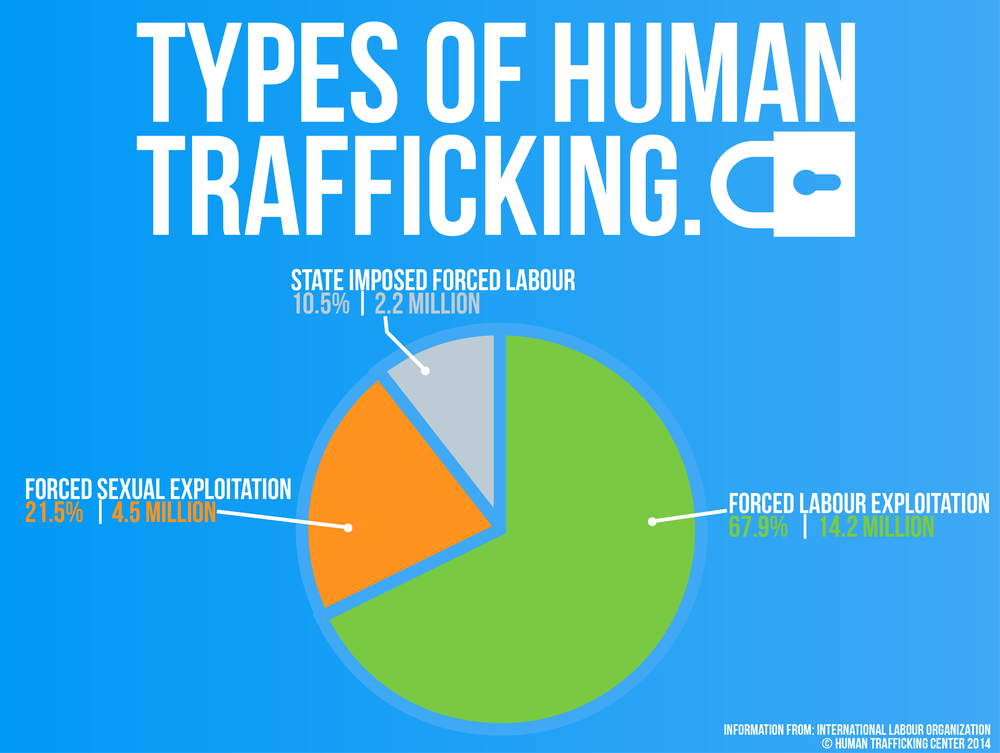
Globalization is the mass diffusion of ideas and culture. Unfortunately, this volatility also encompasses crime. Human traffickers utilize new technologies and growing markets as springboards for slaving. To combat these expanding trafficking mechanisms, justice efforts expand in turn. The modern fight against human trafficking involves a multidisciplinary application of law, criminology, politics, and economics.
Global law lacks unity. Lawyers must dissect the intersections of global law to identify points of law encroachment and justice. As slaves travel from nation to nation, smuggled or coerced, they encounter unique bodies of law specific to the borders they pass through. Justice officials must balance the sovereignty of national laws with the universal search for justice. International law has expanded to define procedures for the apprehension and prosecution of human traffickers. These regulations fall within the jurisdiction of international unions such as United Nations and affiliate programs, including the International Criminal Police Organization (INTERPOL).
Human contraband is difficult to smuggle. Traffickers adapt innovations in transportation and communication to create global networks of slaves. Front companies appear and dissolve across international borders, leeching off global market expansion to satisfy the demand for cheap, forced labor. Savvy traffickers wade through gray-areas of immigration laws to recruit and exploit hopeful immigrants. Groups like INTERPOL record such transactions and regulate the aforementioned fronts for suspicious activity. Law enforcement seeks case-studies to establish modi operandi for international trafficking operations and intervene before lives are destroyed.
Trafficking is a form of human interaction and thus should be studied per a sociological perspective. Obviously, trafficking involves the study of negative social interactions and their processes. Sociologists use the term deindividuation to describe how slavery turns autonomous human beings into tools. Their identities often warp under forced labor and lack of autonomy. Thus, when trying to reintegrate and resocialize, they face the issue of anomie: social dysfunction and disconnection from society. Sociologists study how to resocialize victims of trafficking by giving them access to peer groups and social resources. Sociologists also examine the institutions and social trends that enable trafficking. Traffickers often slip through the hands of inefficient and restricted law enforcement, which often fail to apprehend traffickers in a timely manner. An exceeding focus on business efficiency, incentivizes unscrupulous businesses to solicit traffickers for cheap labor. Poverty in undeveloped nations creates a pool of potential slaves for traffickers.
Trafficking is a market, albeit a sordid one. It’s governed by the same laws found in legitimate markets: supply and demand, profit and loss, risks and incentives. Economics is not the cold study of money and unemployment. It’s an application of mathematics to human nature. Thus, economists studying human trafficking look for driving forces and market mechanisms through the lens of general economic theory. They aim to weaken the market through regulation, working hand-in-hand with lawyers and criminologists, and simultaneously eradicate market incentives. Any economist will tell you that incentives drive markets, and decreasing trafficking incentives will decrease the practice. Thus, financial investment in countries that historically supply and organize trafficking will decrease profit incentives for trafficking procedures, thereby decreasing demand for black money. Groups such as the Borgen Project and ONE lobby Congress to increase USAID investments according to this principle.
Thus, trafficking aggregates law, criminology, politics, and economics. Multidisciplinary approaches better equip monetary and political resources to fight it. Trafficking is multifaceted. Our efforts must be as well.
]]>
I’m not sure why, but it reminded me of a Spanish cathedral, or some kind of nunnery. It makes sense because “safe shelter,” makes me imagine the woman from The Hunchback of Notre Dame yelling “sanctuary” as she tried to get in the church or something from The Sound of Music, where the Trapp family hid from the German soldiers. That’s exactly what Mosaic House is, a place of safety and protection.
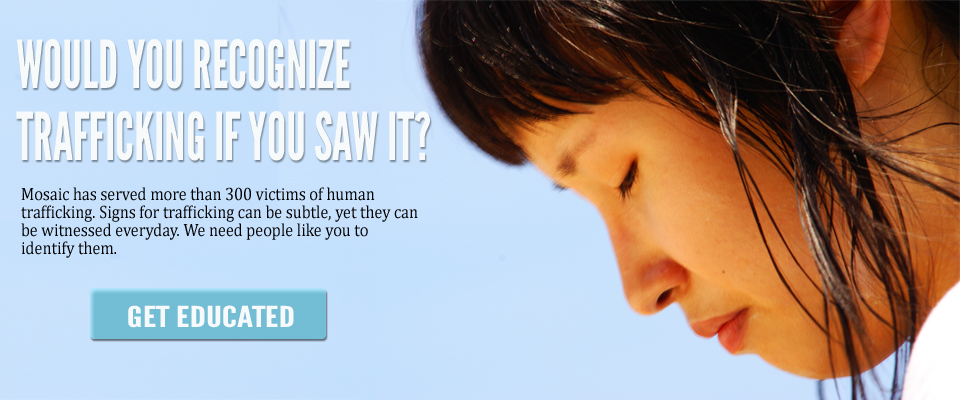
Mosaic House also seeks to bring attention to the issue of human trafficking. Image from mosaicservices.org.
Mosaic House is a shelter for women and children, specifically immigrants, who have suffered from domestic violence or human trafficking. They provide services to help the women and children get back on their feet and back at their lives. It’s a beautiful place, surrounded by trees with a small playground in the backyard for the kids to play in. It’s ironic that such a place that looks so pretty on the outside could hold so much hurt and fear on the inside.
My visit to Mosaic House was spent coloring with the kids. One of the boys was a little older. I was sure that he would think coloring paper plate pumpkins would be lame, but it seriously surprised me when he got the most into it. Adam* and one of the other volunteers in our group got into a paper plate pumpkin war that exceeded my imagination. They were each creating their own armies and designing pumpkins to fight each other. It ended with Adam creating something along the lines of “ghost shields” that were impenetrable-the physical appearance of the ghost shield was nothing more than a single red circle surrounding the drawing on the plate. Since you can’t beat a ghost shield, Adam won the war.
I saw some of the moms with their kids in the hallway and everything looked fine. Nothing during my entire visit to Mosaic House seemed out of the ordinary. The kids were happy, the moms were smiling. Had I not remembered we were at a safe shelter, I would’ve thought I was volunteering at a day care or babysitting. I won’t ever know what those particular women and children have gone through, but there are stories everywhere of people who have experienced what might be similar. I’ve noticed that I don’t question anything that looks normal. It’s easy to think of victims as characters on Law and Order or headlines in the news. Victims are so much more diverse than that. Mosaic House shelters women who were subject to domestic violence and trafficking, and those women look just like all of us. There’s nothing physically different about them. Victims come in all shapes, sizes, ages, genders, and races. They could be all around us, and we just never notice.
It may be a stretch to say we will ever completely eliminate human trafficking and domestic violence, but we can take care of those who were subject to trafficking and violence. That is what Mosaic House is doing. I think it is important to remember though, that in the end, these are actual human beings whose lives we can change for the better and not just statistics on a screen.
*Name has been changed
**All Mosaic House information comes from www.mosaicservices.org
With the extreme political rhetoric that filled this year’s election cycle, the perception of Congress as slow-moving has only been exaggerated. One of the most commonly cited reasons for supporting Donald Trump, a political outsider, is that he will shake things up and get things done. Indeed, there is much more news about how little legislation Congress has passed or how few agreements it has failed to reach than news about its successes. However, there have been some major successes just this year.
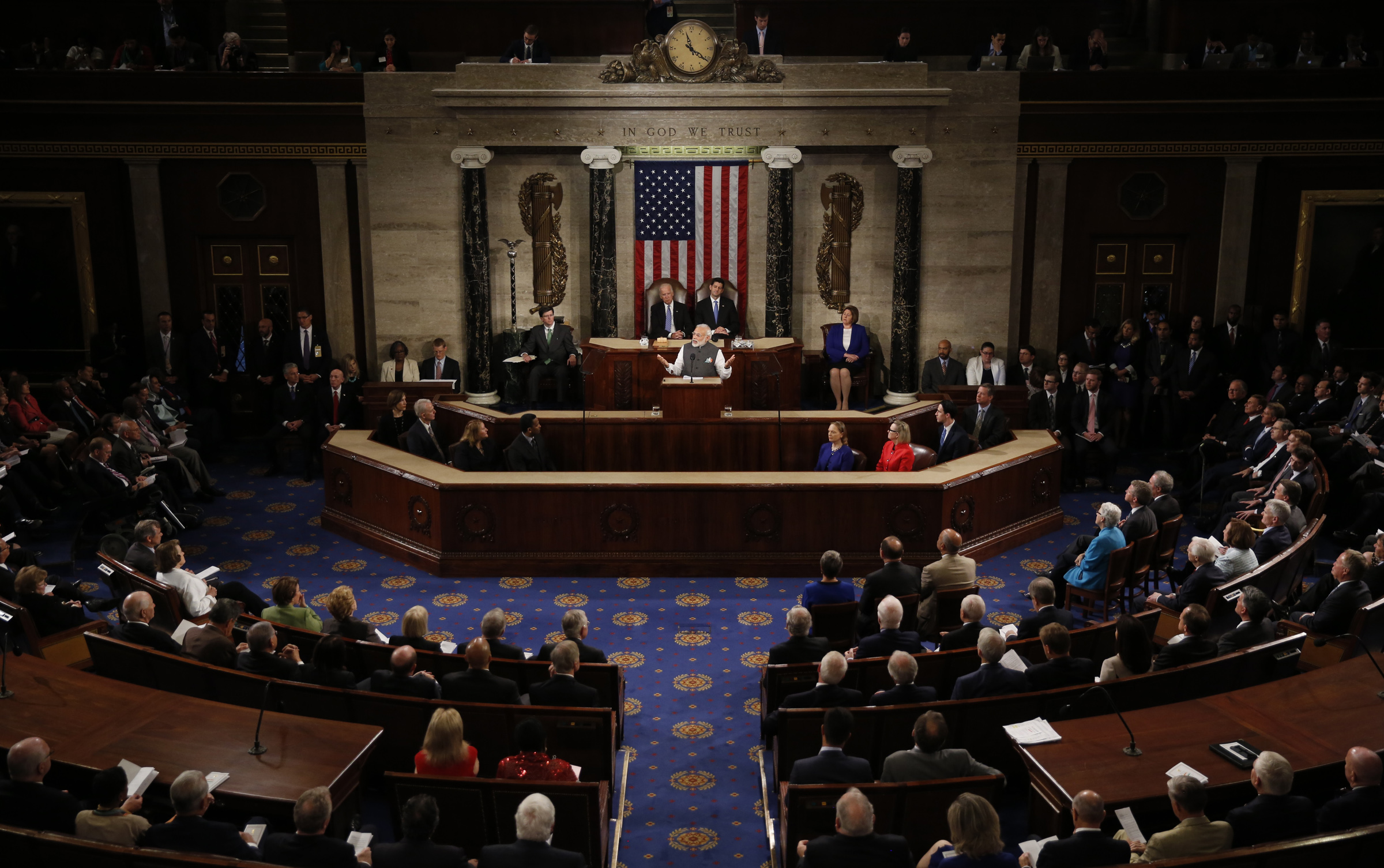
India Prime Minister Narendra Modi addresses a joint meeting of Congress in the House Chamber on Capitol Hill in Washington, U.S., June 8, 2016. REUTERS/Carlos Barria – RTSGLUB
In 2016, Congress has passed three important legislations concerning the global war against poverty: The Electrify Africa, Global Food Security, and Foreign Aid Transparency and Accountability Acts. While the War on Drugs or the War on Terror are subjects of much global contention, these bills were not. Universally, countries can agree that it’s important to turn developing nations into developed ones. To be more accurate, countries like Sudan, Malawi, and Afghanistan represent what many sociologists would call “peripheral nations.” Unlike the “core nations” represented by countries such as the United States and Germany, peripheral nations are unable to sustain economic and political stability without external assistance. The aforementioned legislation is like a set of training wheels that will help get these countries pedaling.
All three bills aim to alleviate the misery of impoverished individuals, but they vary in their methodology. It’s easy to understand what each specific bill does. The Electrify Africa Act authorizes the United States to establish a comprehensive program of education and technology that will enable Africa to develop an electrical foundation by 2020. The Global Food Security Act establishes an agricultural development initiative to create lasting means of nutrition production through education and agricultural market investment. Finally, the Foreign Aid Transparency and Accountability Act promotes analysis and evaluation of current aid programs to ensure that neither corruption nor inefficiency hinder the effectiveness of foreign investment.
Thus, it’s inaccurate to say that Congress is totally ineffective. The passage of these bills through a bipartisan process proves that global poverty is no-nonsense legislation that catalyzes Congress’ workings. These bills will help create solid technological and notional foundations for the impoverished, and the aid the U.S. sends will be accounted for more effectively. Now, what do these bills have to do with human trafficking?
To understand the impact of these bills on human trafficking, one must understand the root cause of trafficking itself: it’s profitable. Regardless of the psychology of the people who enslave others for perverse sexual, financial, or emotional satisfaction, it’s unlikely that trafficking would be prominent if it didn’t result in financial benefit to its propagators. Trafficked individuals provide free labor, can be prostituted, and can be enslaved multiple times in a nefarious Ponzi scheme. Essentially, trafficking is a market motivated by poor professional prospects in the legal sphere.
The Electrify Africa, Global Food Security, and Foreign Aid Transparency and Accountability Acts create a better economic environment for legitimate careers and means for personal subsistence. The technological and agricultural foundations provided by these acts are inherently market-forming. Thriving markets and stronger labor forces will work to establish strong foundations for economic and labor growth in hotspots of human trafficking. The establishment of legitimate markets for profit will decrease the demand for trafficking and human enslavement in impoverished areas around the world.
The passing of these bills are just one step forward, however. Now they must be implemented and built upon as the targeted countries change in their social and economic spheres. This is where we must step in to ensure that our Congressional and Executive representatives prioritize these bills as parts of their foreign policy. Fortunately, we don’t have to be high-end lobbyists that live on the steps of Capitol Hill. It’s as simple as giving your Congressional representative a call while walking to class or sending them an email during a study break and encouraging your friends to do the same. If we advocate for the enactment of these bills and target human trafficking at the root, we can eradicate the systemic causes of human enslavement.
]]>Please contact Meesh Gapinski for more information at sesmicgap@gmail.com or 801.209.2266
]]>
From birth, children in the United States are given greater access to success and comfort than their counterparts in third-world countries, who are riddled with economic hardship and cultural barriers to freedom. This third-world story begins in the hands of owners, not parents. As a child enslaved to the fishing industry, the first tasks are to pull fishing nets out of the water at 3 am, to avoid being attacked by fish as large as their tiny bodies, and to work a full day. Instead of education, they experience the beatings, malnutrition, and a dark life of pain and separation. These children are not identified as people in this world; they are investments.
In 1961 the Akosombo Dam in Ghana created Lake Volta. This man-made lake is one of the largest in the world, accounting for 3.6% of the total country and demonstrating the country’s dedication to overcoming economic oppression. It supplies a massive fishing industry. Simultaneously, the lake is also home to thousands of children, both girls and boys, whose life does not extend beyond the borders of the lake and the walls of the compound they sleep in. Enslaved as young as two, they enter from the surrounding rural regions and are forced to work at the lake. Families are lied to, believing the falsehood that their children will be taken care of and will have real jobs. Most children are taken directly off the street and are shuttled across the borders at night. Still others, the victims of poverty and lack of an education, are sold into slavery knowingly by their parents, who can no longer afford to take care of them.
The pivotal pillars propping up human trafficking (poverty, lack of education, greed, corruption) remain deeply embedded across the globe. Upward economic mobility is limited by subpar educational systems combined with poverty and familial expectations, which strips third-world children of protection from violence, police brutality, and slavery. The system is not designed with escape routes; each generation further perpetuates the brokenness of the slave family or the brutal mindset of the law enforcement.
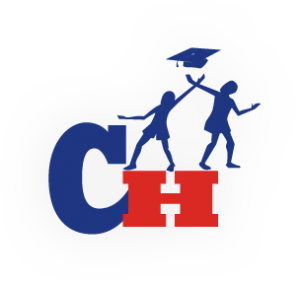 This is the system that Challenging Heights, a non-profit, enters into: they bring life and restoration into a corrupt and damaging structure. Per their tagline, they, “promote youth and family empowerment and children’s rights to education and freedom from forced labor in Ghana.”
This is the system that Challenging Heights, a non-profit, enters into: they bring life and restoration into a corrupt and damaging structure. Per their tagline, they, “promote youth and family empowerment and children’s rights to education and freedom from forced labor in Ghana.”  While opponents criticize many organizations for their efforts to “fix” the system with American ideals and models, Challenging Heights addresses the social issues from the perspective of the governmental policies already established in Ghana. Challenging Heights operates a school in Sankor, where they are able to serve over 700 children from high-risk trafficking areas and meet requirements for the country’s educational guidelines. In addition to educational aid, Challenging Heights works with local authorities and organizations to rescue children from the fishing industry, to rehabilitate and empower them after their rescue, and to prosecute the men who had enslaved them.
While opponents criticize many organizations for their efforts to “fix” the system with American ideals and models, Challenging Heights addresses the social issues from the perspective of the governmental policies already established in Ghana. Challenging Heights operates a school in Sankor, where they are able to serve over 700 children from high-risk trafficking areas and meet requirements for the country’s educational guidelines. In addition to educational aid, Challenging Heights works with local authorities and organizations to rescue children from the fishing industry, to rehabilitate and empower them after their rescue, and to prosecute the men who had enslaved them.
To accomplish this enormous and never-ending task, Challenging Heights needs the financial stability to maintain offices in Ghana and Washington, D.C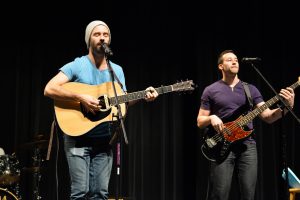 . During the first two weeks of the 2015 summer, Gardner-Webb University’s human trafficking awareness club, Release the Captives, was approached by Challenging Heights to enter into a fundraising partnership. After months of planning and the assistance of a Historians Against Slavery Grant, we organized a benefit concert featuring the Rory Tyer Band in November 2015 to advocate for Challenging Heights. We encouraged the concert goers not only to enjoy the great musical act, but also to lend financial support to this worthy organization. This was a creative opportunity for students and community members to encounter real stories of slavery. While the event was a success, leaving a lasting impression on the audience, we
. During the first two weeks of the 2015 summer, Gardner-Webb University’s human trafficking awareness club, Release the Captives, was approached by Challenging Heights to enter into a fundraising partnership. After months of planning and the assistance of a Historians Against Slavery Grant, we organized a benefit concert featuring the Rory Tyer Band in November 2015 to advocate for Challenging Heights. We encouraged the concert goers not only to enjoy the great musical act, but also to lend financial support to this worthy organization. This was a creative opportunity for students and community members to encounter real stories of slavery. While the event was a success, leaving a lasting impression on the audience, we  learned several lessons worthy of mention to fellow justice-seeking university groups. Most importantly, remember that the audience is the central axis that any fundraiser or awareness event rotates around. We learned to understand the culture of the audience we are reaching, and this dictates marketing and logistics for the event, and implicates how successful the event can be. In considering the audience of a college campus, the timeline of student activities is crucial. Avoid busy times of the year like November, and promote as early as possible. Students need to be convinced that an event is worth their time, regardless the cause. Strive to build an event that capitalizes on the unique culture of your campus. By growing our organization through events like this, and by educating those ple around us, we can spread awareness of injustice and initiate change around the world.
learned several lessons worthy of mention to fellow justice-seeking university groups. Most importantly, remember that the audience is the central axis that any fundraiser or awareness event rotates around. We learned to understand the culture of the audience we are reaching, and this dictates marketing and logistics for the event, and implicates how successful the event can be. In considering the audience of a college campus, the timeline of student activities is crucial. Avoid busy times of the year like November, and promote as early as possible. Students need to be convinced that an event is worth their time, regardless the cause. Strive to build an event that capitalizes on the unique culture of your campus. By growing our organization through events like this, and by educating those ple around us, we can spread awareness of injustice and initiate change around the world.
For more on Challenging Heights, visit http://challengingheights.org/.
]]>
When Dr. Williard first approached me about getting involved with the FREE Project, I
was unsure how I would be able to help. As a (relatively) uneducated student surrounded by
people with PhDs, I felt as if any contribution of mine would be somewhat irrelevant. Despite
this, I tried earnestly to apply myself at our early meetings, where we discussed our mission,
goals, and definitions of unfreedom. What amazed me as early as our first meeting, was the
interdisciplinary approach my professors had in mind for the FREE Project. Our meetings were
focused on a diverse dialogue rather than dominated by academia, making the conversation more
accessible for everyone.
By creating this diverse and approachable atmosphere, I was able to join in a
conversation about contemporary unfreedom that wasn’t limited to just chattel slavery or sex
trafficking. Rather, by speaking about slavery’s legacies alongside contemporary slavery, it
became clear to me that all forms of unfreedom feed off of one another, and are kept alive by
systemic powers within legislature and social structures. Through those early meetings I began to
understand how connected we are to modern slavery, and how everyone has a part to play in
modern emancipation.
In November we had our debut FREE project event, where four professors and I
introduced our concepts of contemporary slavery and its role in society. While I focused on debt
bondage among migrant workers in the garment industry in South Asia, my biggest emphasis
was on the role students have to play. Due to of our age and economic standing, most students
feel rather powerless when it comes to combating global injustice. But because young adults,
particularly women, spend the most per-capita on clothing, our spending habits actually have a
tremendous impact on the market. By reject unethically-made clothing, clothing stores such as
H&M and Zara will have no choice but to start being more transparent with their manufacturing
process, leading to a safer environment for their workers abroad.
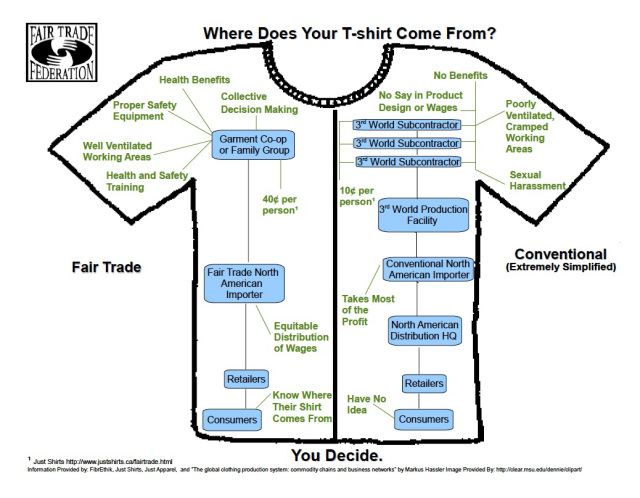
Whitney included this image in her recent Free Project presentation about slavery in the garment industry.
While I was happy with my presentation, what blew me away the most about that initial
event was the variety of topics our speakers covered. One topic that hit home to me was
unfreedom in the sex-trafficking industry. The pervasiveness of victim-blaming and the
objectification of women allows for the continuation of rape-culture and sex-trafficking in our
nation. Young women, particularly young women of color, are taken advantage of and then
shunned by the populous for the work they were coerced or forced to do. This is particularly a
problem in Minnesota, where the Mall of America is a leader in trafficking young girls.
Despite the relevance of sex-trafficking and debt-bondage, my favorite part of that initial
event was the commentary on the legacy of slavery in America. In a time where the words
“Black Lives Matter” represent a controversial topic, I found our focus a striking reminder as to
why our African American communities are speaking up. Just because traditional slavery has
been abolished for many years, doesn’t mean there isn’t a lot of resentment and institutionalized
oppression left to sift through. America has a long way to go before becoming a place where “all
men are created equal,” and it is organizations like the FREE Project that help bring that fact to light.
I am thankful be a part of the FREE Project at St. Thomas, because so rarely do I come
across a club as diverse and interdisciplinary as this one. Because of the range of perspectives
present at each meeting, I feel as though I am truly getting the well-rounded experience that
liberal arts colleges like mine intend. By bringing so many voices together, I feel like we have
the ability to actually change something. Perhaps for now our impact will be only in Minnesota,
but I can see a future where the FREE Project at St. Thomas impacts people all over the country
by bringing us together under a common cause–to abolish modern slavery.
]]>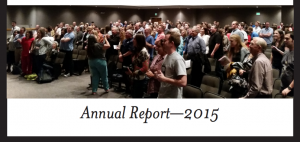 Brigham Young University’s Anti-Human Trafficking Club accomplished a lot in 2015, and they’ve compiled it into a report for all our Free Project chapters to view. This is a great opportunity for clubs to learn from one another successes. If you need ideas about events or projects, get inspiration from BYU. Read the full report here!
]]>
Brigham Young University’s Anti-Human Trafficking Club accomplished a lot in 2015, and they’ve compiled it into a report for all our Free Project chapters to view. This is a great opportunity for clubs to learn from one another successes. If you need ideas about events or projects, get inspiration from BYU. Read the full report here!
]]>